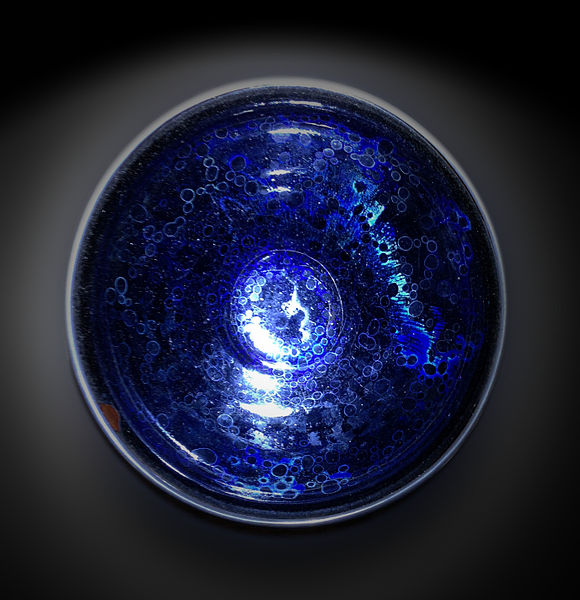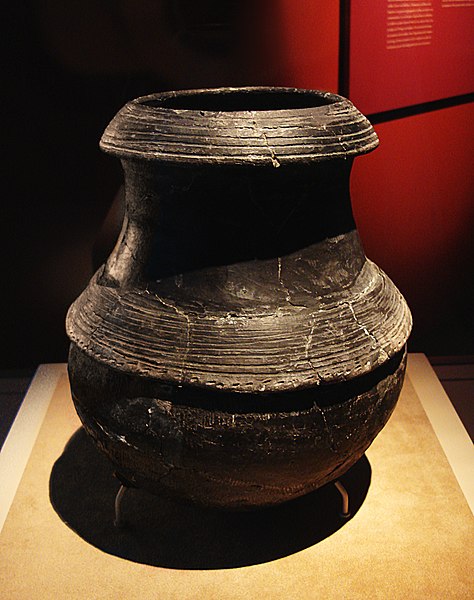Jian ware or Chien ware is a type of Chinese pottery originally made in Jianyang, Fujian province. It, and local imitations of it, are known in Japan as Tenmoku (天目). The ware are simple shapes in stoneware, with a strong emphasis on subtle effects in the glazes. In the Song dynasty they achieved a high prestige, especially among Buddhist monks and in relation to tea-drinking. They were also highly valued in Japan, where many of the best examples were collected. Though the ceramic body is light-coloured, the wares, generally small cups for tea, bowls and vases, normally are glazed in dark colours, with special effects such as the "hare's fur" "oil-spot" and "partridge feather" patterns caused randomly as excess iron in the glaze is forced out during firing.
Jian tea bowl with "hare's fur" glaze, southern Song dynasty, 12th century, Metropolitan Museum of Art (see below)
Jian yohen tenmoku tea bowl with blue and green "oil spot" marks, southern Song dynasty, 13th century. National Treasure (Japan)
View of the "hare's fur" glazing effect on a Jian bowl
Hare's fur glaze, Song dynasty, China
Chinese ceramics show a continuous development since pre-dynastic times and are one of the most significant forms of Chinese art and ceramics globally. The first pottery was made during the Palaeolithic era. Chinese ceramics range from construction materials such as bricks and tiles, to hand-built pottery vessels fired in bonfires or kilns, to the sophisticated Chinese porcelain wares made for the imperial court and for export. Porcelain was a Chinese invention and is so identified with China that it is still called "china" in everyday English usage.
a pair of complementary flasks from Yongle period (1402–1424) in the Ming dynasty
Pair of famille rose vases with landscapes of the four seasons, 1760–1795
A black pottery cooking cauldron from the Hemudu culture (c. 5000 – c. 3000 BC)
Painted jar of the Majiayao culture, Late Neolithic period (3300–2200 BC)








